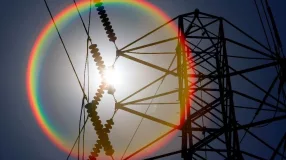As the United States continues its evolution toward a lower-carbon economic future, natural gas will increasingly play a major role in supporting the deployment of renewable energy resources, concludes a new study commissioned by the INGAA Foundation. The study, The Role of Natural Gas in the Transition to a Lower-Carbon Economy, also finds that natural gas will remain a significant contributor to the U.S. energy portfolio and economic growth for years to come as it enables the United States to achieve low-carbon initiatives.
Using complex modeling and industry subject matter expertise, report author Black & Veatch Management Consulting examined two possible scenarios regarding how the United States may transition toward an energy portfolio that relies increasingly on renewables over a 20-year period from 2020 to 2040.
The first path – the Balanced Future scenario – evaluates a future in which renewable growth is achieved through a balance of policy initiatives and market economics. The second scenario, the Rapid Renewables Transition, examines a transition heavily driven by policy initiatives that aims to accelerate the penetration of renewables in the U.S. energy system.
Deepa Poduval of Black & Veatch, the principal study author, said:
“In the Balanced Future scenario, natural gas presents a very efficient power generation source that will replace coal and nuclear capacity that retires over the study period … So, this is a balanced world where natural gas plays a part, but not a dominant part, in replacing the coal and nuclear retirements. But we see that even at that level, gas demand to serve power generation is about 11 Bcf/d, and quite robust.”
Both scenarios found that natural gas and related pipeline infrastructure will play a significant role in supporting the transition to a greener economy. Poduval explained that:
"The attributes of natural gas and our robust natural gas infrastructure mean that natural gas will remain an essential source of energy within a greener U.S. energy mix.”
Natural gas will provide the U.S. electric grid with the flexibility, efficiency and fast ramp-up generation necessary to ensure reliability, serving as a backstop to intermittent renewables.
INGAA Foundation President Don Santa commented:
“As demonstrated by this report, America’s natural gas will serve both domestic and global needs for many years to come. The members of the INGAA Foundation look forward to contributing to the safe, efficient and environmentally responsible transmission of natural gas to customers as we transition to a lower-carbon economy.”
The results of this study highlight that natural gas is the ideal foundation for the greater adoption of renewables. As the United States transitions to a lower-carbon economy, natural gas and pipeline infrastructure will continue to have an integral role.
To learn more about the complementary role and interconnectivity between natural gas and renewable forms of energy, click here.
To view the study in its entirety, click here.






